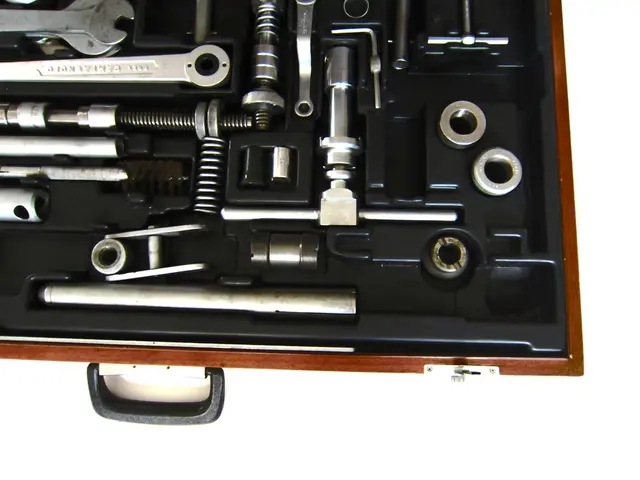Utilization of a Doubly Linked List for Deque Creation
In the realm of data structures, the Doubly Linked List Deque (DLL Deque) stands out for its efficiency and versatility. This innovative data structure allows for constant-time insertion and deletion at both ends, making it an ideal choice for various applications.
The DLL Deque is built upon a Node structure, which contains data, a previous node pointer (prev), and a next node pointer (next). Two pointers, front and rear, are initially set to NULL, signifying an empty deque.
When inserting a new node at the rear of a non-empty deque, the new node is linked back to the current rear, and the current rear is linked forward to the new node. The rear pointer is then moved to the new node. Similarly, when inserting at the front, the new node is linked to the current front, and the current front is linked back to the new node, with the front pointer moved to the new node.
Deletion from either end follows a similar pattern, with updates to the front or rear pointers accordingly. For instance, deletion from the rear involves moving the rear pointer to the previous node, updating the next pointer of the previous node to point to the node before it, and deallocating the memory of the removed node.
The DLL Deque supports four basic operations: adding at the front, adding at the rear, removing from the front, and removing from the rear. Additionally, it offers several other operations such as retrieving the front item, retrieving the last item, checking if the deque is empty, returning the number of elements, and removing all elements.
All operations on a DLL Deque take O(1) time and O(1) extra space, except for the clear operation, which takes O(n) time. This makes the DLL Deque an efficient choice for managing data in a variety of scenarios.
In a recent implementation using Java, the Doubly Linked List was successfully used to create an efficient Deque. Underflow (empty deque) is checked before deletion from both ends to prevent errors.
In conclusion, the Doubly Linked List Deque is a powerful data structure that offers constant-time insertion and deletion at both ends, making it an ideal choice for various applications. Its versatility, combined with its efficiency, makes it a valuable tool in the data structures toolkit.







